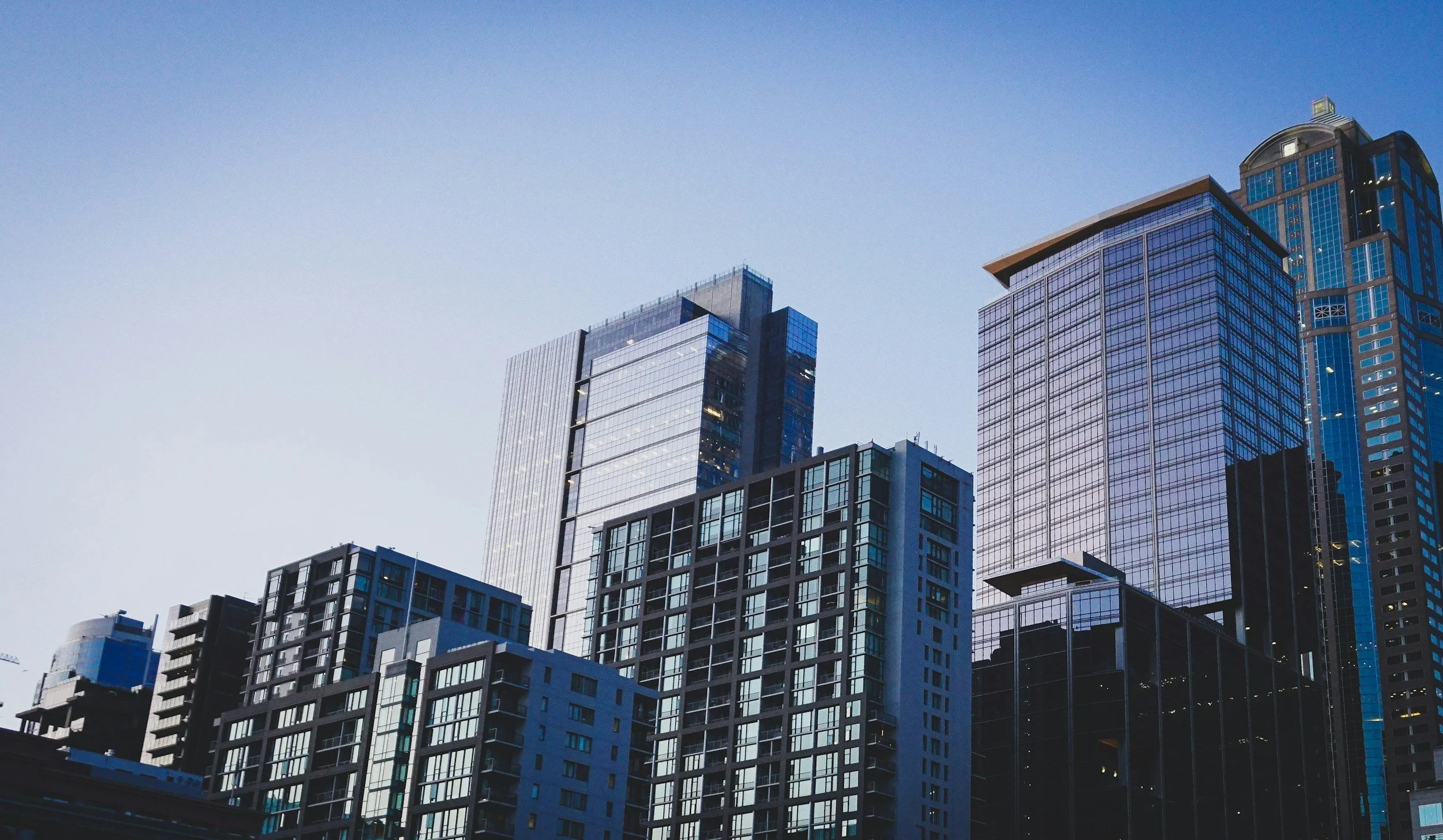Cap Rate Arbitrage: How the Wealthy Turn Debt into Pure Profit
The ultra-wealthy don’t buy commercial real estate just for appreciation. They buy it because they understand one simple principle that most investors overlook:
👉 It’s not just what you pay — it’s the spread between what you earn and what you borrow.
That spread is called cap rate arbitrage, and it’s one of the fastest ways to scale wealth through leveraged real estate.
Cap rate arbitrage happens when you buy a property at a higher return (cap rate) than the cost of the debt you use to finance it. It’s the difference between the yield your property produces and the interest you’re paying the bank.
And when you get that spread right?
You’re not just earning on your equity — you’re earning on the bank’s money too.
It’s how seasoned investors:
Turn average deals into above-average returns
Scale portfolios without diluting equity
And keep compounding gains year after year — even without market appreciation
In this post, I’ll break down:
What cap rate arbitrage is (in plain English)
How to calculate and use it to your advantage
Where to find deals that allow for it
And how the top 1% use this strategy to grow wealth with control, predictability, and speed
Let’s dive into the math — and the mindset — behind this underrated investment lever.
What is Cap Rate Arbitrage?
At its core, cap rate arbitrage is about using other people’s money, specifically, the bank’s money, to amplify your returns.
Let’s break it down.
🧮 Cap Rate 101
A cap rate (capitalization rate) is the return a property generates based on its current income, assuming no debt.
The formula:
Cap Rate = Net Operating Income (NOI) ÷ Purchase Price
So, if a property earns $100,000 in NOI and you buy it for $1 million:
Cap rate = $100K ÷ $1M = 10%
That’s your unleveraged return or what you'd earn if you paid all cash.
💸 Cost of Capital: The Other Half of the Equation
Now let’s say you finance 75% of the purchase with a loan at 6% interest.
That 6% is your cost of capital — what you’re paying to use someone else’s money.
If your cap rate (10%) is higher than your loan rate (6%), you’re in positive territory.
That spread, in this case, 4%, is what creates cap rate arbitrage.
🚀 Why Cap Rate Arbitrage Works
The goal of arbitrage is simple:
Earn more on the borrowed money than it costs you to borrow it.
In commercial real estate, that’s often very achievable — especially when:
You’re buying in a strong market
You’ve sourced the deal below market value
You’re adding value through renovations or lease-up
Or you’ve negotiated attractive financing terms
Here’s the magic:
Even if your unleveraged return is 8–10%, the leveraged return on your actual invested equity could be 12–20%+, depending on the spread.
You’re using the bank’s money to magnify your own and still keeping full control of the asset.
Up next, we’ll run the actual numbers on a real-world deal so you can see exactly how this plays out on paper.
The Math Behind the Model
Cap rate arbitrage isn't just a theory. It's a practical, repeatable strategy that lets you generate higher returns on every dollar you invest.
Let’s run through a simplified example to show how it works in the real world.
📊 The Scenario
Purchase price: $2,000,000
Net Operating Income (NOI): $160,000
Cap rate: 8%
Loan amount: 75% of purchase = $1,500,000
Interest rate: 6%
Annual debt service: $90,000 (interest-only for simplicity)
Equity investment: $500,000 (your capital)
💡 Step 1: Understand the Base Return (Unleveraged)
NOI of $160,000 on a $2 million purchase = 8% cap rate.
If you paid all cash, you'd earn an 8% annual return on your $2 million.
💡 Step 2: Layer in the Debt
You're using $1.5 million in financing at 6% interest.
That means your annual debt service is $90,000.
Subtract that from the NOI:
$160,000 NOI
– $90,000 debt service
= $70,000 cash flow
This is your net income after debt, which goes to you, the investor.
💰 Step 3: Calculate Your Leveraged Return
You only invested $500,000 of your own capital.
$70,000 of annual cash flow on a $500,000 investment = 14% cash-on-cash return
That’s nearly double the return of an all-cash purchase, simply by using financing smartly.
This is cap rate arbitrage in action.
📈 Why It Matters
By borrowing at 6% and earning 8% on the full value of the property, you’re earning the 2% spread on the bank’s money.
You’re not just profiting from the performance of the asset. You’re profiting from the structure of the deal.
This is how experienced investors:
Boost returns without taking on unnecessary risk
Scale portfolios faster
And compete in markets where price appreciation alone won’t deliver high yields
Next, we’ll break down where smart investors find these kinds of spread-driven opportunities in today’s market.
Where Smart Investors Find Cap Rate Arbitrage
Cap rate arbitrage isn’t about luck. It’s about knowing where to look and how to spot the right conditions for a profitable spread.
Here are the four places experienced investors often find these opportunities.
🔍 1. Mismanaged or Underperforming Properties
Many properties sell at a discount simply because they’re poorly run. Think:
Below-market rents
High vacancy rates
Deferred maintenance
Sloppy bookkeeping or mom-and-pop ownership
If you can step in, stabilize operations, and improve the net operating income, you can create arbitrage from day one and increase it over time.
These deals are common in:
Older multifamily buildings
Flex or light industrial
Smaller retail centers
🤝 2. Distressed or Motivated Sellers
Cap rate arbitrage gets easier when you’re negotiating with a seller who needs to close quickly or isn’t trying to squeeze every dollar out of the sale.
Look for:
Estate sales
Divorce-driven liquidations
Out-of-state or tired landlords
Businesses offloading real estate to raise cash
These deals often come with built-in upside, allowing you to buy above-market cap rates and negotiate seller-friendly terms.
🌆 3. Secondary and Tertiary Markets with Strong Fundamentals
In hot primary markets, cap rates compress and spreads disappear. But in fast-growing secondary markets, there’s often less competition and more room for arbitrage.
Target cities and submarkets that show:
Job growth and in-migration
Expanding infrastructure
Underserved real estate sectors
These are places where you can still buy at a 7 to 9 percent cap rate while locking in debt at 6 percent or less.
🔒 4. Off-Market Deals Through Broker and Owner Relationships
The best opportunities rarely hit the public market.
They’re sourced through:
Brokers who know you’re a closer
Property managers who tip you off about distressed assets
Direct-to-owner campaigns
When you’re early to the deal, you can negotiate price, terms, and creative financing — all of which improve your ability to structure cap rate arbitrage into the acquisition.
Cap rate arbitrage is about more than just finding a high cap rate.
It’s about finding the right deal, in the right market, with the right financing to turn borrowed money into profit.
Next, we’ll look at what happens when things go wrong and how to protect yourself from negative leverage.
Risk Management - When Arbitrage Goes Wrong
Cap rate arbitrage can supercharge returns when the spread is in your favor.
But it can also backfire when the numbers flip.
This is called negative leverage, and it’s one of the fastest ways to lose money in commercial real estate.
Let’s break down what to watch out for — and how to protect yourself.
❌ Negative Leverage: The Danger Zone
Negative leverage happens when your cost of debt exceeds the cap rate at which you buy the property.
For example:
You buy at a 5.5 percent cap rate
You finance at 6.5 percent interest
Now, your debt is costing you more than the property is producing.
Your loan is literally dragging down your return.
In this scenario, every dollar you borrow reduces your yield instead of increasing it.
📉 What Causes Arbitrage to Collapse
Cap rate arbitrage can break down when:
Interest rates rise suddenly, increasing borrowing costs
Cap rates compress too much during a competitive market cycle
A property underperforms due to overestimated income or unexpected expenses
You stretch for a deal and ignore fundamentals
Even a one percent shift in either direction can erase your spread.
That’s why the most successful investors focus on margin of safety just as much as projected return.
🛡️ How to Protect Yourself
Here’s how seasoned investors safeguard against arbitrage risk:
1. Stress-Test the Deal
Run models at higher interest rates and lower exit cap rates.
Ask: “Does this still cash flow if financing costs rise or rent growth slows?”
2. Fix or Cap Your Interest Rate
Use fixed-rate loans or interest rate caps to lock in your spread, especially in volatile markets.
3. Use Conservative Underwriting
Don’t assume best-case rent bumps or low vacancy.
Use realistic income assumptions and full reserves for capital expenses.
4. Maintain a Healthy Debt Service Coverage Ratio (DSCR)
Target a DSCR of 1.25 or higher to ensure the property generates enough net income to comfortably cover the loan payments.
5. Avoid Over-leveraging
Just because a lender offers 80 percent LTV doesn’t mean you should take it.
A more conservative structure gives you breathing room if the market shifts.
Cap rate arbitrage is a powerful tool, but like any leverage strategy, it cuts both ways.
The key is to stay disciplined, build in buffers, and never assume the market will bail you out.
Up next, we’ll look at how the wealthiest investors scale portfolios using cap rate arbitrage as a repeatable, long-term strategy.
How the Wealthy Use Cap Rate Arbitrage to Scale
Wealthy investors don’t just rely on market appreciation to build their portfolios. They create scalable systems that allow them to multiply returns by combining smart leverage with long-term strategy. Cap rate arbitrage is one of the most powerful tools in that playbook.
Here’s how they use it to consistently grow wealth and accelerate portfolio expansion.
🔁 1. Refinance and Reinvest
After stabilizing a property and increasing the net operating income, investors often refinance based on the new, higher valuation. This allows them to pull out a portion of their equity and redeploy it into the next deal—without selling the asset or triggering capital gains taxes.
By repeating this process across multiple properties, they create a self-funding system that uses previous gains to fuel future acquisitions.
🧱 2. Combine Arbitrage with Value-Add Execution
Buying at a favorable spread is just the beginning. The wealthy often pair cap rate arbitrage with improvements that boost income and drive appreciation. These might include unit renovations, rent increases, operational efficiencies, or re-tenanting.
As net income increases, the return on leveraged dollars climbs even faster, expanding the spread and building more equity over time.
🏗️ 3. Diversify Across Asset Classes and Markets
Sophisticated investors apply this strategy across a variety of asset types, including multifamily, industrial, medical office, and NNN retail. Each asset class presents unique cap rate and financing dynamics, but the principle remains the same: earn more than it costs to borrow.
By spreading investments across sectors and geographic markets, they reduce risk while maintaining growth and cash flow.
👨👩👧 4. Build Legacy Portfolios Through Long-Term Leverage
Family offices often structure portfolios around cap rate arbitrage as a means of building multi-generational wealth. The strategy allows them to scale efficiently, preserve equity, and create predictable income streams that can be passed down or reinvested over decades.
Many use trusts, LLCs, and tax planning vehicles to protect gains and ensure the portfolio continues to serve future generations.
Cap rate arbitrage is more than just a way to boost returns on individual deals. When implemented consistently, it becomes a system for compounding wealth, preserving capital, and scaling with intention.
Conclusion
Cap rate arbitrage is a strategy used by investors who want more than just steady cash flow or long-term appreciation. It’s a deliberate way to turn financing into a wealth multiplier by earning more on a property than it costs to borrow the money.
Rather than chasing market timing or gambling on appreciation, sophisticated investors focus on the spread. When you can buy a property with a higher yield than your cost of capital, you are putting leverage to work for you, not against you.
The key is understanding the numbers, securing the right financing, and being disciplined in your underwriting. Add in value-add improvements or refinance opportunities, and you have a repeatable formula to scale without burning more equity or taking unnecessary risks.
Cap rate arbitrage is not a gimmick. It’s the backbone of how family offices and high-level investors build durable, cash-flowing portfolios with long-term upside.
For those interested in delving deeper into commercial real estate investing, check out our course offerings. The courses provide in-depth insights, real-world case studies, and practical strategies to help you navigate the complexities of commercial real estate and achieve success in your ventures. Whether you're a seasoned investor or just starting in the world of commercial real estate, there's always more to learn. Equip yourself with the knowledge and tools you need to thrive in commercial real estate!











If you’ve been investing for a while, you know the grind.
You’ve closed deals, managed contractors, worked through leases, and seen both wins and setbacks. Maybe you’ve owned single-family rentals, a few duplexes, or even some small commercial buildings. You understand the fundamentals: how to run numbers, navigate debt, and keep properties occupied.
But here’s a question that hits at a different level: are your investments giving you leverage or just more responsibility?
As your portfolio grows, so does the complexity. More tenants often mean more phone calls. Bigger buildings bring additional systems, staff, and liability. And while your equity might be growing on paper, your time can get stretched thin across too many directions.
That’s why more experienced investors are quietly shifting toward asset classes that offer something rare in commercial real estate: simplicity that still delivers strong returns.
Two of the most overlooked categories in this space are flex industrial and industrial outdoor storage (IOS).
They’re not flashy. You won’t find them in luxury investor decks or high-end brochures. But these properties produce solid returns, attract long-term tenants, and are surprisingly light on operational headaches. Best of all, they give seasoned investors a way to keep growing without being consumed by the demands of their portfolio.
In this post, we’ll walk through:
What makes flex and IOS so attractive
The numbers behind why they work
How they fit into a growing portfolio
And why they might be the most strategic asset class you haven’t explored yet
This is not about going bigger for the sake of scale. It’s about going smarter.
Because the goal is not more units. It’s more freedom.